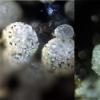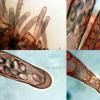
13-08-2025 12:01
De ayer en KK de vacunoAscas con 20 o mas esporasa

11-08-2025 20:31
Jorge HernanzNous avons trouvé cette espèce dans des habitats

06-08-2025 08:56
 Antonio Ezquerro Antoñana
Antonio Ezquerro Antoñana
Hola a todos, Me gustaría saber qué opinan sobre

28-07-2011 23:41
 Alex Akulov
Alex Akulov
Dear FriendsCourtesy of Zotto, I post to the forum

10-08-2025 11:40
 Zuzana Sochorová (Egertová)
Zuzana Sochorová (Egertová)
Hello, would you agree here with the identificati

09-08-2025 17:52
Henri KoskinenHello, would you say this is Peziza or Pachyella?

31-07-2025 16:32
 Andreas Gminder
Andreas Gminder
Dear collegues,today I found on a very fresh fire

12-02-2012 11:31
 Hans-Otto Baral
Hans-Otto Baral
Hi allI am quite sure that nobody has a pdf of thi

02-08-2025 12:35
 éric ROMERO
éric ROMERO
Bonjour tous, J'ai trouvé sur pétiole de Fraxin

02-08-2025 17:21
 Andgelo Mombert
Andgelo Mombert
Bonjour,Je recherche la description et la planche
Ascobolus ?? en KK de vacuno
Castillo Joseba,
13-08-2025 12:01
Ascas con 20 o mas esporas
a ver si hay alguna sugerencia
Saludos
Joseba
Enrique Rubio,
13-08-2025 12:19
Re : Ascobolus ?? en KK de vacuno
Hola Joseba.
Quizás Thecotheus pelletieri,
Quizás Thecotheus pelletieri,
Castillo Joseba,
13-08-2025 12:21
Re : Ascobolus ?? en KK de vacuno
Parece que si colega, un abrazo, tienes una birra pagada
Enrique Rubio,
13-08-2025 12:23
Re : Ascobolus ?? en KK de vacuno
No te olvides. Y que esté bien fría....







